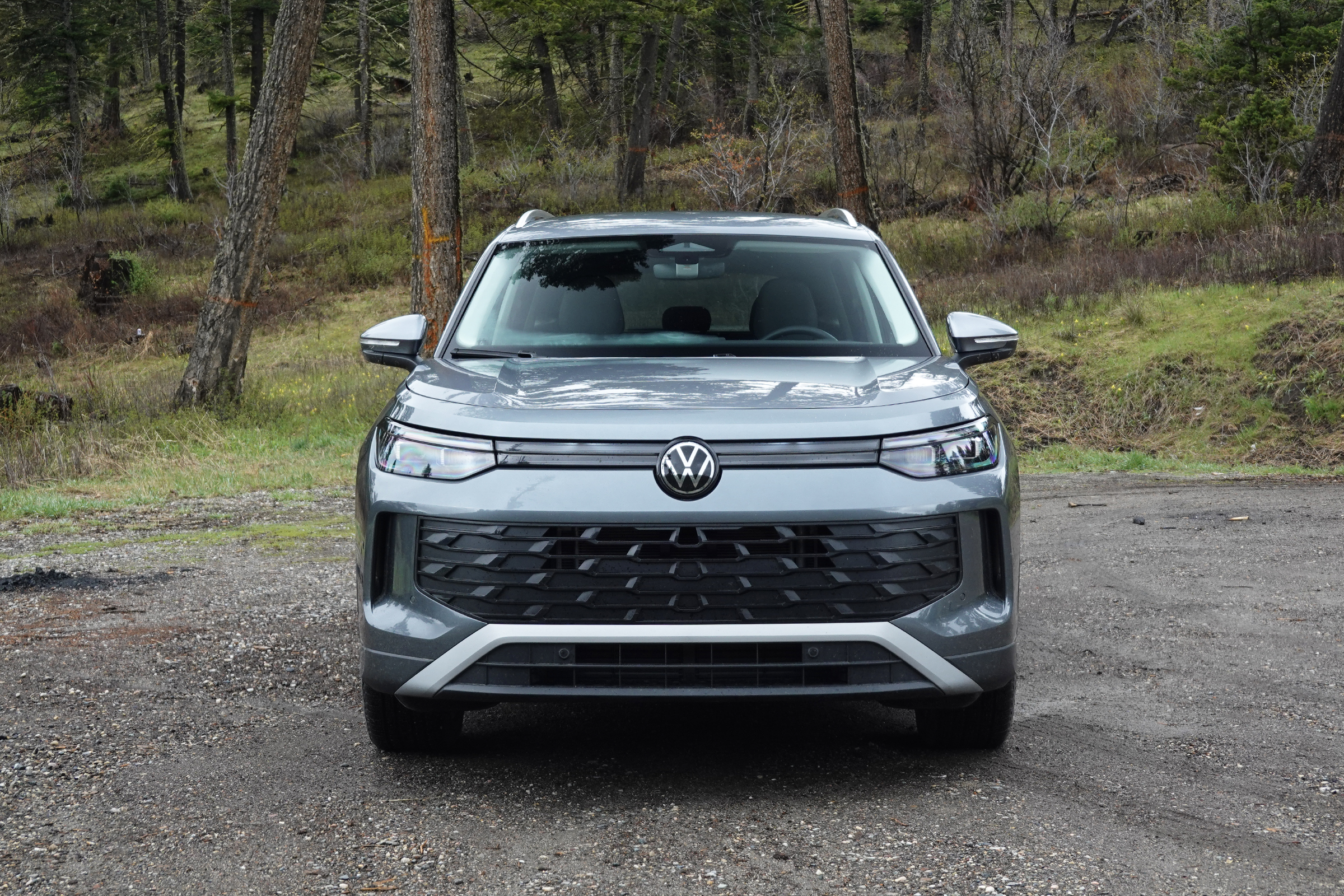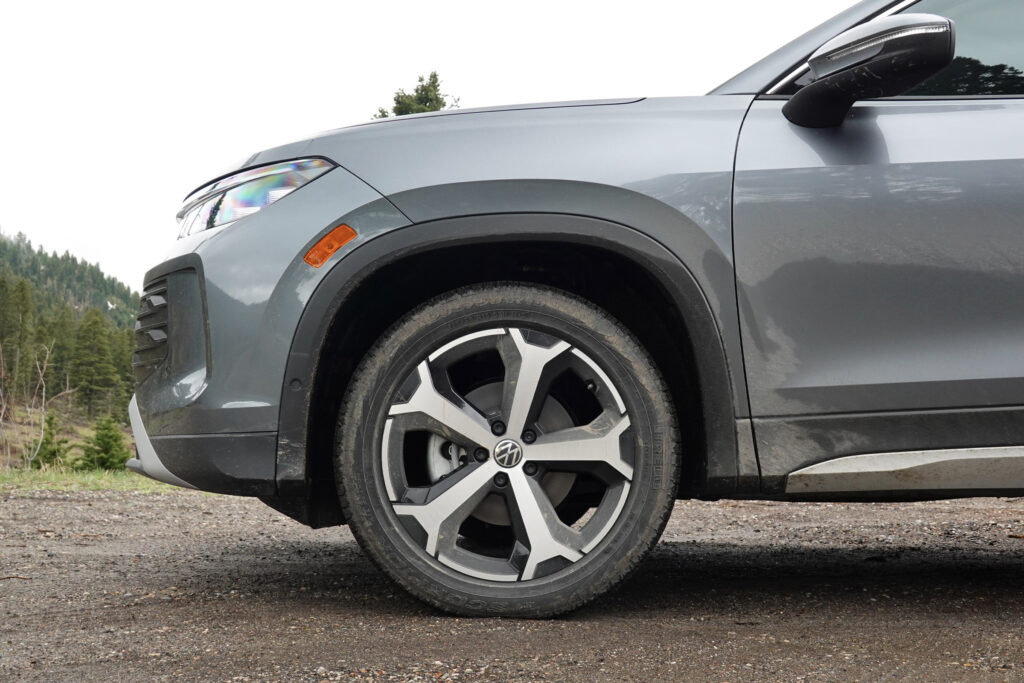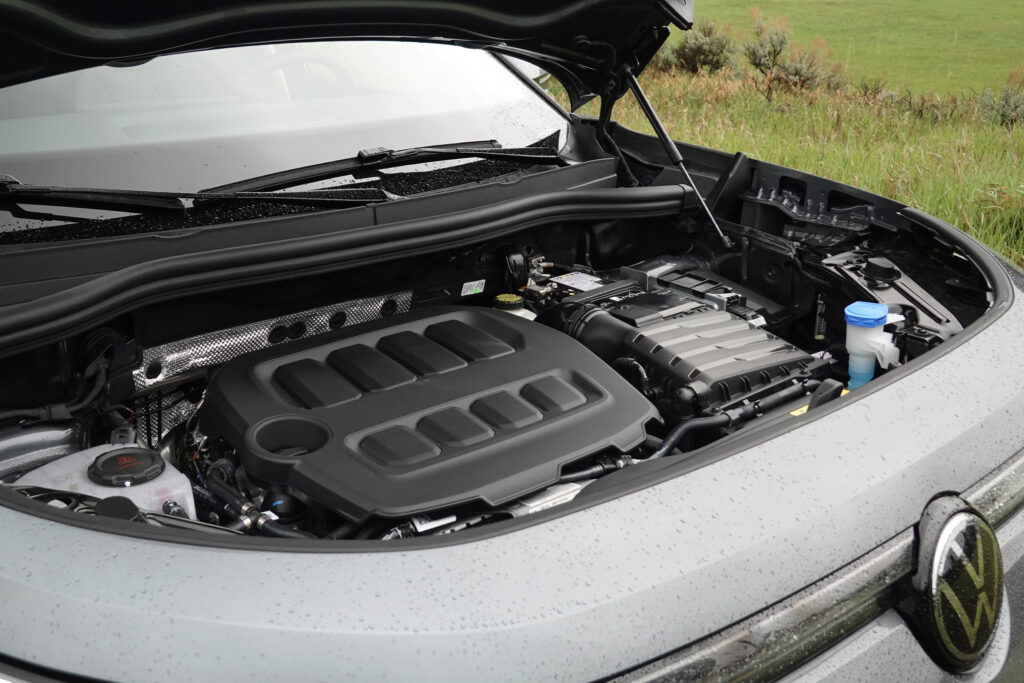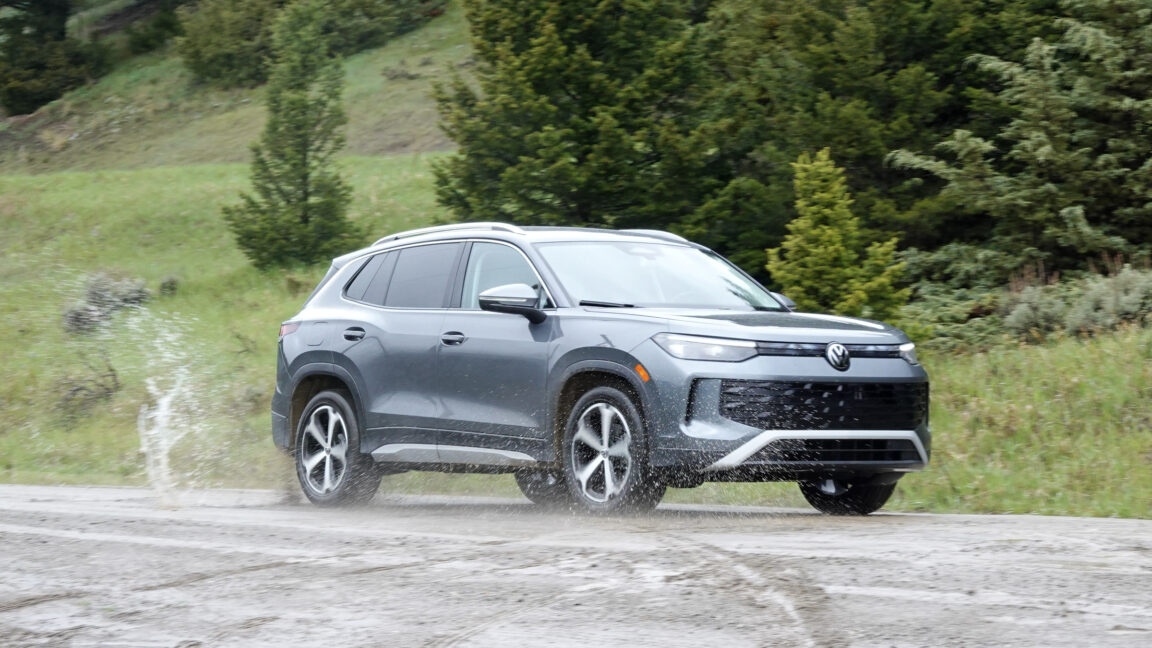In the modern era, cars keep getting bigger and bigger between generations. Or at least, they’re certainly not getting smaller. That’s especially true in America, where bigger is always better and the vehicles in the current crop of “compact” crossovers are now nearly as large as full-size SUVs from a decade ago. Don’t ask about curb weights, either, as more powerful drivetrains, including widespread adoption of hybrid-electric components, add significant mass, as highlighted by the new BMW M5 “sport sedan.”
Within that fray, however, the new Volkswagen Tiguan stands apart. VW purposefully refined the third-gen Tiguan to cater better to American consumer needs, which meant dropping the third row to create more interior volume for the front and rear seats. The wheelbase still measures the same length at 109.9 inches (2,791 mm), but shorter overhangs mean the overall length actually shrinks by nearly two inches. Yet more efficient packaging on the inside also results in a marginal passenger volume increase of about two percent.
To help keep pricing attractive at below $30,000 to start, VW also decided to skip out on a hybrid variant, but the new EA888evo5 2.0 L turbocharged-four nonetheless delivers more power and improved fuel economy. And all of the above actually contributes to the Tiguan losing weight while evolving from the second to third generation, shaving about 160 lbs (72.5 kg), depending on trim.

Michael Teo Van Runkle
There’s some ID.4 in here, but also a big helping of generic.
Michael Teo Van Runkle

Michael Teo Van Runkle
19-inch wheels and tallish sidewalls helped the ride and handling.
Michael Teo Van Runkle

Michael Teo Van Runkle
The venerable EA888 engine.
Michael Teo Van Runkle
19-inch wheels and tallish sidewalls helped the ride and handling.
Michael Teo Van Runkle
The venerable EA888 engine.
Michael Teo Van Runkle
Generic outside, great inside
Volkswagen USA recently invited Ars to join a rainy test drive of the Tiguan’s SE and SEL R-Life trims in Bozeman, Montana. At first glance, the new exterior definitely hews more closely to current crossover trends, which the Tiguan arguably helped to inaugurate back in the late-2000s. There’s also a healthy dose of Volkswagen ID.4 design language throughout, especially at the nose. The interior truly steps up to a new level, though. I started out in an almost-base Tiguan SE, which means front-wheel drive and minimal options, not even onboard navigation.
Like most buyers, though, I connected my iPhone via Wireless CarPlay, which effectively makes onboard nav obsolete. And the SE’s 12.9-inch touchscreen atop the dash provides all the necessary tech, as premium materials throughout clearly prioritize touchpoints to enhance the impression of quality.

